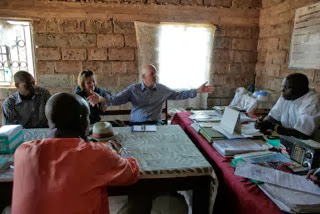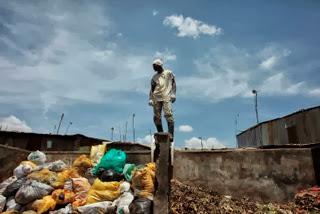Until this week I’d never heard of Mugumoini. And that’s the problem. No one else has heard of it either. I’d heard of the Kibera slum, the biggest slum in Africa and one of the biggest in the world. Kibera is the one you’ll see Lenny Henry visit on Comic Relief and it’s one that gets all the media attention and therefore gets all the donor money from around the world.
Last week we got a desperate message from international photo journalist Georgina Goodwin www.georginagoodwin.com (we’d met her three weeks previously as she was sent to photograph Leadership for Hope in action in Nairobi). She wrote
“I have been working on a story on rape in a slum community on the edge of Kibera, the 'village' of around 20,000 is called Mugumoini and they have virtually no outside aid/help at all. Forgotten. One of the key issues that causes men to behave like this is lack of self-esteem and money. Your training could really help this community (as it does help everyone who is lucky enough to have it). Please can we talk further on what is needed to make this happen?”
 |
| Trevor chats with Thomas - youth leader. Jane chats with bar owner Bob |
(Please look at Georgina’s docu-photos http://www.lightstalkers.org/images/show/1382840 scroll button on the bottom and let your cursor rest of the persons photo and you will get the stories behind these women. As you read it, remember this is where we were today)
We agreed to visit the slum with Georgina this morning to see what we can do. As we drove there Georgina told us more about this forgotten nightmare of a community. Numbers vary, but a conservative estimate is of a 20,000 population in the core slum, made up of 5,000 adults and at least 15,000 children. The whole community has hardly any toilets. We did our sums and our best estimates was one toilet available to 80 families. We only saw one toilet block of 5 toilets. There is one reported rape in Mugumoini every 12 hours. HIV rates are at 12.7%. (This is very high!) If you ever wanted to see what hopelessness looks like then welcome to the abandoned world of Mugumoini.
 |
| Trevor wins over the Slum Chief |
 |
| Georgina with her key contacts in the community |
“We don’t bring any money with us, just the training to empower people to start earning their own money”, I said at one point. While the polite conversation continued, spirits instantly dropped in some people on hearing my words. One guy got up and left. The meeting went as well as it possibly could and an invitation was issued. We now asked to go into the slum to see for ourselves. Permission was granted.

The next few hours were both inspiring and emotionally exhausting. How do the poor live on less than a dollar a day? Come to Mugomoini. How does a young person forge a pittance of a living when their energy-filled enthusiasm is constantly thwarted by corrupt people who will only allow any thing to happen if they make some personal money out of it? Come to Mugomoini. How does a young girl ever get to feel safe and thrive in a male dominated unsafe world? Come to Mugomoini (& reread Georgina blog above). How do 80 families survive on one toilet? Come to Mugomoini. How do you live in a darkened 9’ x 9’ room with no windows, whose front door step is a stinking, open sewer with last nights toilet running past you? Come to Mugomoini. And so it goes on….no clean free water, no refuse collection, unschooled youth, no jobs, street-boy rule, endemic abuse of every kind and life without hope.
 |
| A few young people are trying to take the massive rubbish issue in hand |
The question for us is how do Jane & I make the decision whether to come and bring Leadership for Hope to such a community? They can afford nothing so we need to raise the money. We must also consider that if we empower the young people and they start being proactive and making an income and start social projects to benefit the community then the resistance against them from those who demand bribes for everything will increase. That means our training, whilst making things better, could actually make things a lot worse. And we always address this issue of corruption head on in the training, so how will we be viewed by the hustlers of Mugomoini?
How do we make safe, wise, hope-bringing decisions? If we say ‘yes’ then………. If we say ‘no’ then…….. Whichever way you look at it Mugomoini is an abandoned world and we are asking ourselves if we could walk past it knowing we have something to offer?
Sometimes (often) in life, decisions just aren’t straightforward.
 |
| This is the only clear space in the whole community. This was the dump until recently |
- TW